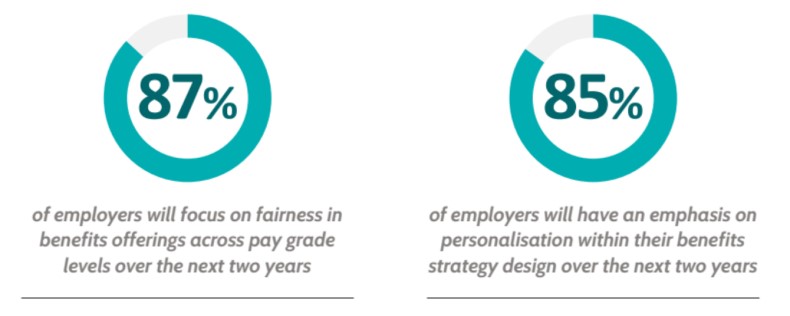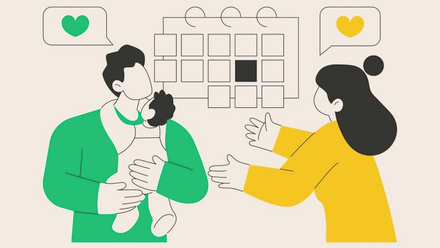Fairness and personalisation drive benefits design strategy
Designing a reward and benefits strategy that suits every generation in the workplace is far from easy. Often the wants and needs of employees comes down to individual circumstances such as life stage, caring responsibilities, financial resilience and personal traits such as beliefs and age.
Our recent Benefits Design Research 2022 highlighted that an increasing number of employers are tackling this issue by seeking to introduce fairness and personalisation into their benefits design strategy. Below is an extract from the research which considers how diversity, equity and inclusion (DEI) is supporting the drive towards greater fairness and personalisation.
Fairness and personalisation
The social inequalities highlighted by the Covid-19 pandemic and the chronic skills shortages businesses are now experiencing is driving greater awareness of the link between DEI and benefits. According to REBA’s DEI Benefits Research 2022, 69% of employers say that they struggle to recruit Black, Asian and minority ethnic talent, and 60% to recruit female talent. Benefits strategies that are fair and appeal to employees with a wide range of different needs, priorities and experiences are likely to become more of a differentiator over the next two years, and an offering that appeals to a broad range of people on a personal level is becoming an important design factor.
Being able to create a more personalised benefits experience also speaks to this drive towards inclusivity in employee benefits. For example, a third of respondents plan to focus more on employees and their dependants, perhaps recognising the need to support parents and carers at work: our DEI research found that over a third (36%) of businesses face the challenge of losing new parents from the workforce.

Perhaps the ultimate form of personalisation is simply to provide employees with cash which they can spend as they want. Our findings show that nearly a quarter of employers intend to offer exchange of benefits for cash in the next two years. This could be in response to specific needs, such as redirecting pension contributions above auto-enrolment minimums, or as an alternative to higher earners reaching the pension lifetime allowance. Offering wellbeing ‘pots’ for employees to spend on activities that suit them is another example.
While the general trend is towards greater fairness and personalisation, we saw a significant number of respondents who are not yet addressing these factors as part of their strategy.
Shifts towards big picture benefits
Employee wellbeing continues to dominate reward and benefits strategies. However, benefits supporting DEI and the environmental agenda are high priorities for many rewards professionals in the next two years, eclipsing traditional benefits such as pensions, where spend is expected to remain static.

Both of these stats above link to employers’ key benefits strategy design principles of fairness and personalisation, suggesting that spending will gradually begin to match employers’ aspirations in these areas.
DEI and environmental, social and governance (ESG)-related benefits are the second and third highest areas of spend that employers expect to make in the next two years, highlighting the influence of societal and environmental factors in the workplace.
There is also overlap between DEI benefits and those aimed at the family, where 47% of employers expect to increase spend. Family benefits such as fertility treatment and support for eldercare directly relate to DEI issues. These are sorely needed: according to Carers UK, 77% of carers report feeling tired at work because of unpaid caring roles and an estimated 600 people a day give up work to caring commitments LINK
Spending is least likely to change for more traditional and stable benefits, such as health and group risk insurances and pension contributions, with no change reported by 59% and 71% of organisations respectively. As the findings suggest, investment in benefits is going into newer initiatives, driven by employee demand and, longer term, alignment with corporate goals.
Download the full Benefits Design Research 2022 for more insights into the future of workplace reward and benefits strategy.







